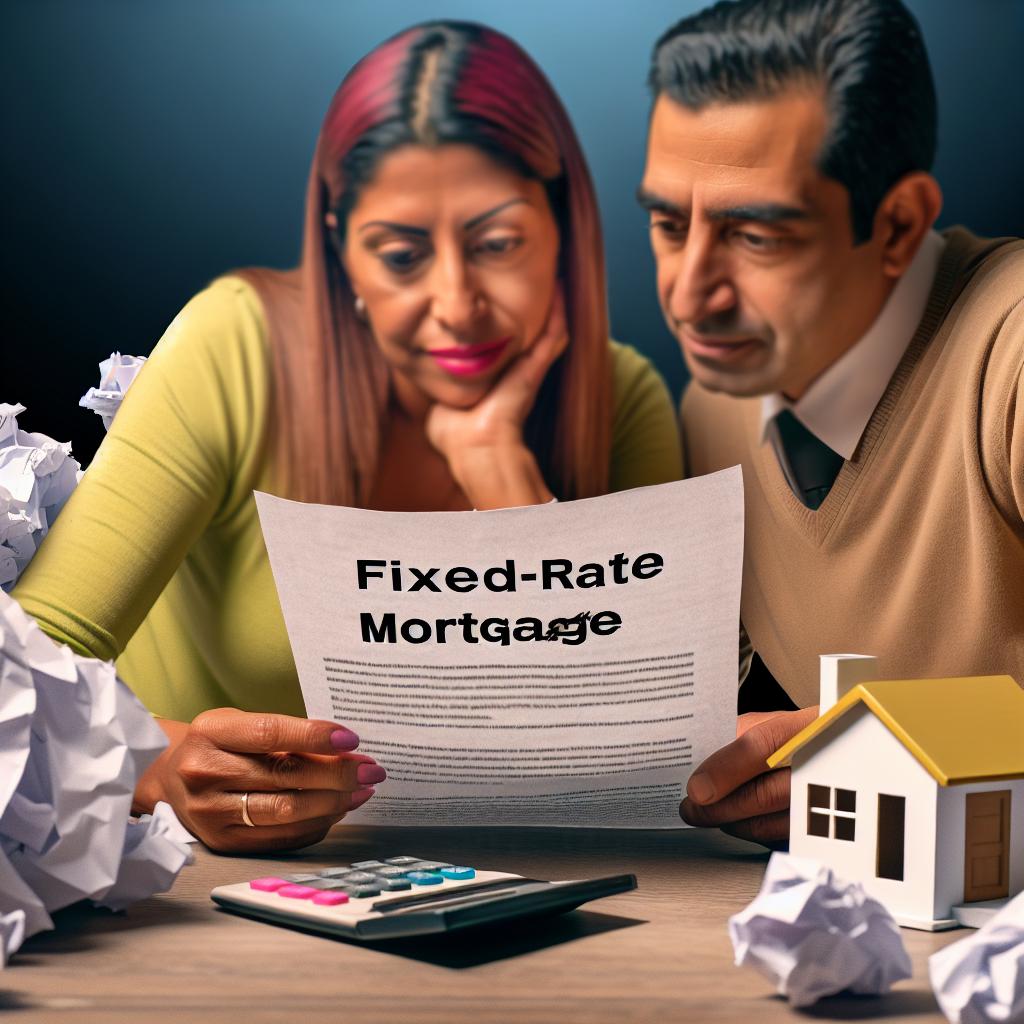
The benefits of a fixed-rate mortgage.
The Stability of Fixed-Rate Mortgages
A fixed-rate mortgage provides borrowers with a reliable and stable interest rate throughout the loan term. This financial product is particularly advantageous for individuals seeking long-term security and predictable monthly payments. It offers a level of consistency that can be very appealing, especially in the economic climate where fluctuations in interest rates can occur.
Consistent Monthly Payments
One of the primary benefits of a fixed-rate mortgage is the stability it offers. With a fixed interest rate, homeowners can expect consistent monthly payments over the life of the loan. This predictability allows for easier budgeting and financial planning, as there are no unexpected changes in the monthly mortgage obligation. The fixed-rate mortgage ensures that the principal and interest portions of the payment remain unchanged, facilitating a structured financial outlook.
Understanding monthly payments is crucial when considering a fixed-rate mortgage. The monthly amount not only covers the interest cost of borrowing but also gradually reduces the principal balance over time. This amortization process eventually leads to full ownership once the loan term concludes, typically spanning 15, 20, or 30 years. Many borrowers appreciate this long-term visibility into their fiscal obligations.
Protection Against Interest Rate Fluctuations
Another significant advantage of a fixed-rate mortgage is protection against future interest rate increases. Unlike adjustable-rate mortgages, where rates can fluctuate based on market conditions, fixed-rate loans lock in the current rate for the duration of the mortgage. This means that even if market interest rates rise significantly, the borrower’s rate remains the same, providing peace of mind and long-term savings. This protection extends beyond mere financial savings; it also safeguards borrowers from the complexities of rising rates and potential reorganizations of financial priorities.
By securing interest rates at a fixed level, individuals are able to insulate themselves from the vicissitudes of the broader economic environment. This protection is particularly valuable in times of financial instability or when inflationary pressures contribute to rising interest rates, which can make borrowing more expensive. Borrowers are thus afforded a stable cost that aids in financial predictability.
Comparing with Adjustable-Rate Mortgages
While fixed-rate mortgages offer stability, it is useful to compare them with adjustable-rate mortgages (ARMs). In an ARM, the interest rate may offer initial savings due to potentially lower starting rates, but it carries the risk of future increases. This uncertainty can make ARMs less suitable for individuals planning to stay in their homes for extended periods.
Adjustable-rate mortgages can initially appear attractive thanks to their typically lower introductory interest rates, sometimes referred to as teaser rates. These rates are fixed for an initial period—often five, seven, or ten years—after which they adjust periodically according to prevailing market rates. This can lead to fluctuations in monthly payments, which might be more challenging to manage over the long term, especially if increases are significant.
Conversely, the stable nature of fixed-rate mortgages makes them preferable for those valuing predictability over potential savings linked to market-rate declines. While the initial costs might be higher than the introductory rates of ARMs, fixed-rate mortgages eliminate the need to worry about future market movements that could increase mortgage costs.
Suitability for Different Homebuyers
Fixed-rate mortgages are particularly appealing to those intending to stay in their homes for a long period. First-time homebuyers often prefer this type of mortgage due to its financial predictability. However, it is essential to assess individual financial situations and goals when deciding on a mortgage type.
The reliability of fixed-rate mortgages suits individuals who prioritize stability and have longer-term settlement plans. Retirees or families looking to expense their homes over decades often find the fixed nature ideal. Homebuyers considering a fixed-rate mortgage should evaluate long-term income stability, potential career shifts, and personal life changes as part of their decision-making process.
Prospective fixed-rate borrowers should also consider the interest rate environment. When rates are low, locking in a fixed rate can be particularly advantageous. However, during periods of high rates, the appeal might wane unless market projections suggest further rate increases. Individuals must weigh these considerations against their personal financial plans.
In conclusion, the stability and predictability of a fixed-rate mortgage make it a preferred option for many homebuyers. By shielding borrowers from interest rate volatility, it ensures consistent monthly payments, contributing to better financial management and long-term security. Understanding the intricacies of fixed-rate mortgages allows borrowers to make informed decisions aligning with their financial goals and lifestyle preferences. This, in turn, sets a foundation for sustainable homeownership and financial peace over the life of the mortgage.
